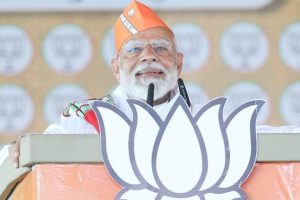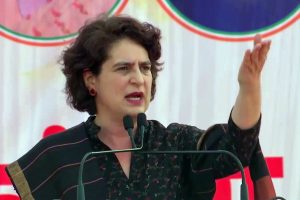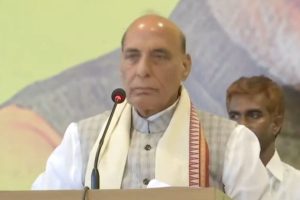Pakistan is a country endowed with great political thinkers, architects and engineers, as is evidenced in the shining glory of their magical, visionary projects, with each surpassing the other in its simple genius. Why then is the country in such a mess? Elementary. This flattering definition must come from their selfassessment diaries, while the rest of us clear the debris, bury the dead and patch up the gravely wounded from the fallout of each ‘genius’ of a failed project, the spectacular own goal. We are in the midst of one. It’s a part of an endless cycle.
In my own lifetime, I have witnessed things coming 360 degrees at least twice and yet Pakistanis persist in taking pride in the flat-lined learning curve. If there were no ‘innocent bystanders’, one would be happy to take the ‘it is, what it is’ attitude. But when millions of industrious Pakistanis, whose daylong toils bring them a heartbreaking pittance and their life amounts to no more than going up a slippery pole in perpetuity, are so brutally cheated out of what ought to be theirs by right, one is filled with rage, albeit impotent.
Yes, impotent because there is nothing one can do. You and I are nobodies. Even the love child, or two, that illicit political engineering affairs produced, is helpless. They may cry out in pain but only when they are shunned by their ‘padrone’ and fight to earn back the lost love and the cosy canopy. That is just one problem. After every failed experiment, the architects, the engineers say publicly that ‘nation-building’ is a thing of the past and pledge never again. Even so, in the absence of ‘learning’ genes/DNA, the pledges made in the twilight of a reign that’ll soon see the coronation of another chief architect don’t excite me much.
As a journalist, having personally witnessed at close quarters the end of Gen Zia’s dictatorship yield to quasi-military rule, his death and what followed, leads me to believe we are insane enough to try the same policy over and over again. I recall an angry Nawaz Sharif, with his smooth, ample pink cheeks taking on a darker hue, responding with: “Mein is sawal ka jawab dena zaroori nahi samajhta (I don’t consider it necessary to answer that question)”. This reporter had asked him if he’d like to comment on reports that Hamid Gul was taking credit for forming the IJI, which Mr Sharif headed.
The elections that followed weren’t free enough but there were some serious miscalculations by the engineers about the political and electoral equilibrium in Sindh and, as a result, the edifice of their project started to crumble soon. After the elections, Benazir Bhutto’s PPP may have been able to cobble together a paper-thin majority, because it was ascertained that no numerical permutation could stop her, but she faced roadblocks at every step of the way.
The first was to ensure that Mr Sharif got enough support in the provincial assembly elections that followed the National Assembly elections to deny her a win in Punjab, from where her party had won more seats for the National Assembly. And IJI did edge past PPP in the provincial assembly.
Benazir Bhutto’s government was gone in two years, a full three before her five years were over, though she also survived a no-confidence vote backed by her detractors, the Zia loyalists from the Aiwan-iSadr to other important addresses in Islamabad, Rawalpindi and Lahore. Anyway, this history is far too recent to warrant repetition in detail. You know the point being made. Nawaz Sharif, after his own aborted government way ahead of the full term and a similar fate befalling Ms Bhutto’s, won a two-thirds majority.
This win transformed him into an ugly dictator. He started to believe, like someone else a couple of decades later who did not even have a simple majority, that he was the all-powerful leader of the nation and could run the country with an iron hand, and not political consensus. Before long, the rug was pulled from under him. Having been sentenced in a sham hijacking trial, he was imprisoned and soon negotiated his way into exile.
Eventually, both BB and NS realised that they were locked in pointless head-butting battles against one another, while someone else was left free to gather the spoils. Ms Bhutto’s assassination, and the results the 2008 elections threw up, tested to the full the ‘Charter of Democracy’ she concluded in London with Mr Sharif and, after a rocky relationship, the charter was shredded and the two parties went their separate ways.
Following the 2013 elections, to be fair to Mr Sharif, who won a twothirds majority in the National Assembly and Punjab and could have formed a government with allies and independents even in KP, he demonstrated his democratic credentials and gave the PTI the first try as it was the single largest party there. Of course, alarmed by the implications of the FATF grey-listing and the prospect of international isolation, he asked that the policy of supporting militants be revised.
Once the story appeared in the media, the anger he faced eventually led to his ouster from office, banishment from politics and imprisonment on dubious charges. For years, the architects had been looking for a compliant alternative to strong-headed civilian leaders. They bet on Mr Sharif but he later converted to a democrat. Another illicit engineering affair produced another source of great pride for the padrone.
He was said to be squeaky clean. Then it turned out the squeaky clean wasn’t that unblemished, was incompetent and rather prematurely started making plans for a decade in office. Ergo, he had to be dealt with. Willing collaborators emerged. They mirrored the favourite child’s conduct of a few years earlier. The result is a right royal mess. Can ‘compromised’ politicians lead us out of this hole? That is a discussion for another time.











